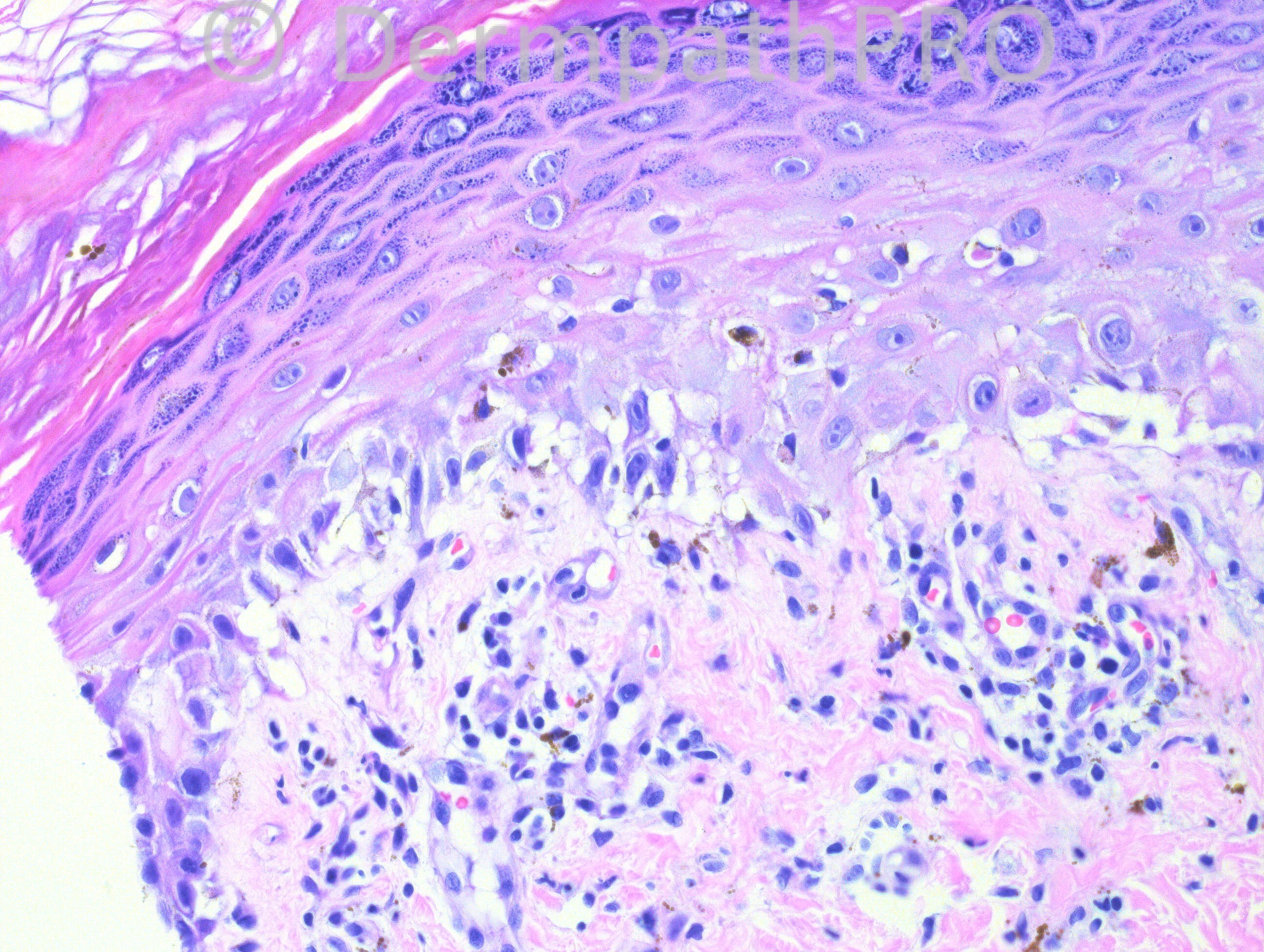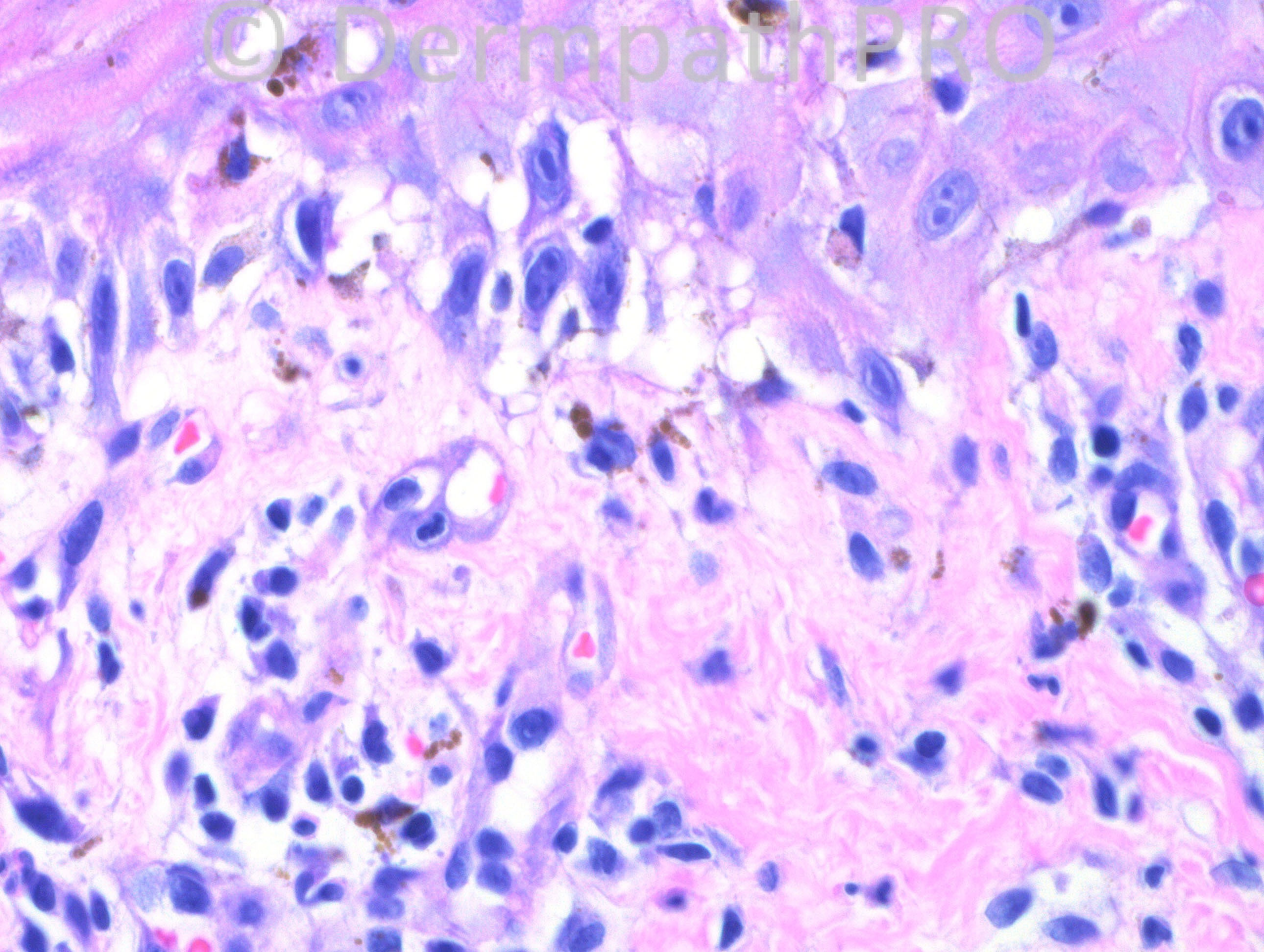Case Number : Case 711 - 7 Mar Posted By: Guest
Please read the clinical history and view the images by clicking on them before you proffer your diagnosis.
Submitted Date :
10 months-old female with diffuse hypopigmented macules, patches and papules on face, trunk and extremities. This biopsy is from the right upper back.
Case posted by Dr. Hafeez Diwan.
Case posted by Dr. Hafeez Diwan.





User Feedback